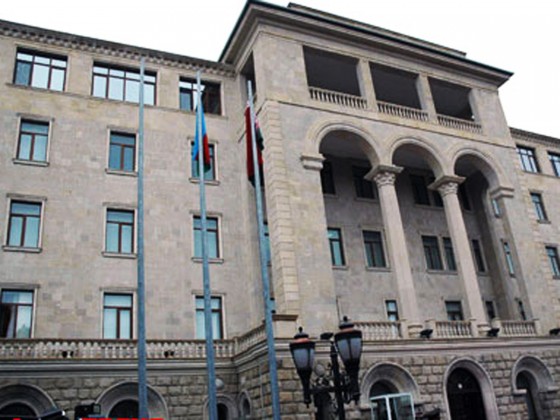
Armenians are spreading the photos of dead soldiers killed in Ukraine on the social media trying to hide their losses and claiming that the corpses on the photos allegedly belonged to Azerbaijani soldiers, says Vagif Dargahli, head of the Azerbaijani defense ministry’s press service.
“This is a provocation and they resorted to it because they don’t have any facts,” Dargahli told Trend Apr. 4. “Armenians are spreading the photos that are not related to Azerbaijan, which they found on social networks.”
Dargahli added that Armenians are also spreading false information that allegedly Azerbaijani armed forces use violence and brutality against the Armenian civilians.
“Azerbaijan’s Defense Ministry declares that the personnel of the Azerbaijani armed forces is fighting only against the Armenians, who have invaded the Azerbaijani territories,” said Dargahli. “The Azerbaijani soldiers, unlike the Armenians, do not use violence against civilian population.”
On the night of Apr. 2, all the frontier positions of Azerbaijan were subjected to heavy fire from Armenians, who were using large-caliber weapons, mortars, grenade launchers and guns. Azerbaijani settlements near the frontline densely populated by civilians were shelled as well.
A counter-attack was carried out following the provocations of the Armenian armed forces on the night of Apr. 2.
Six Armenian tanks, 15 gun mounts and reinforced engineering structures were destroyed and more than 100 servicemen of the Armenian armed forces were wounded and killed during the shootouts.
Twelve servicemen of the Azerbaijani armed forces heroically died, one Mi-24 helicopter was shot down and one tank was damaged on a mine.
Three more soldiers of Azerbaijan were killed during the past day and night as a result of the ceasefire violation.
On Apr. 4, Azerbaijani armed forces destroyed three tanks and eliminated around 30 servicemen of the Armenian armed forces.
The conflict between the two South Caucasus countries began in 1988 when Armenia made territorial claims against Azerbaijan. As a result of the ensuing war, in 1992 Armenian armed forces occupied 20 percent of Azerbaijan, including the Nagorno-Karabakh region and seven surrounding districts.
The two countries signed a ceasefire agreement in 1994. The co-chairs of the OSCE Minsk Group, Russia, France and the US are currently holding peace negotiations.
Armenia has not yet implemented the UN Security Council’s four resolutions on withdrawal of its armed forces from the Nagorno-Karabakh and the surrounding districts.
Trend
